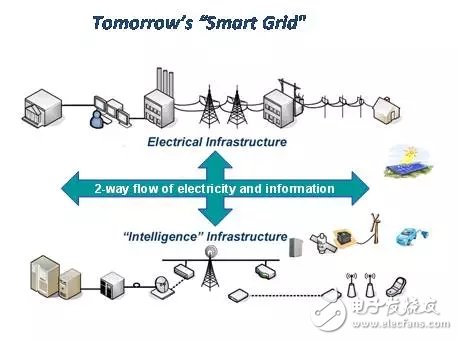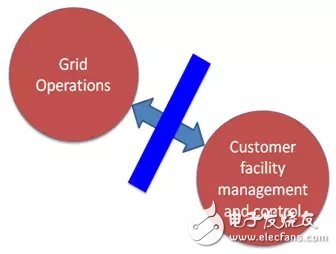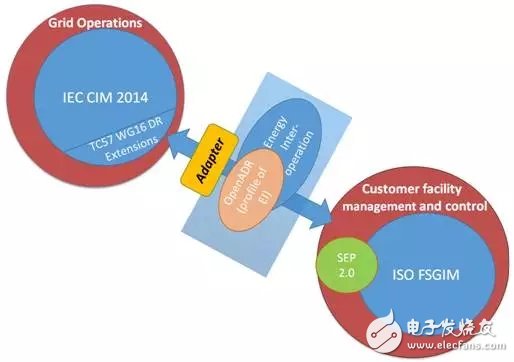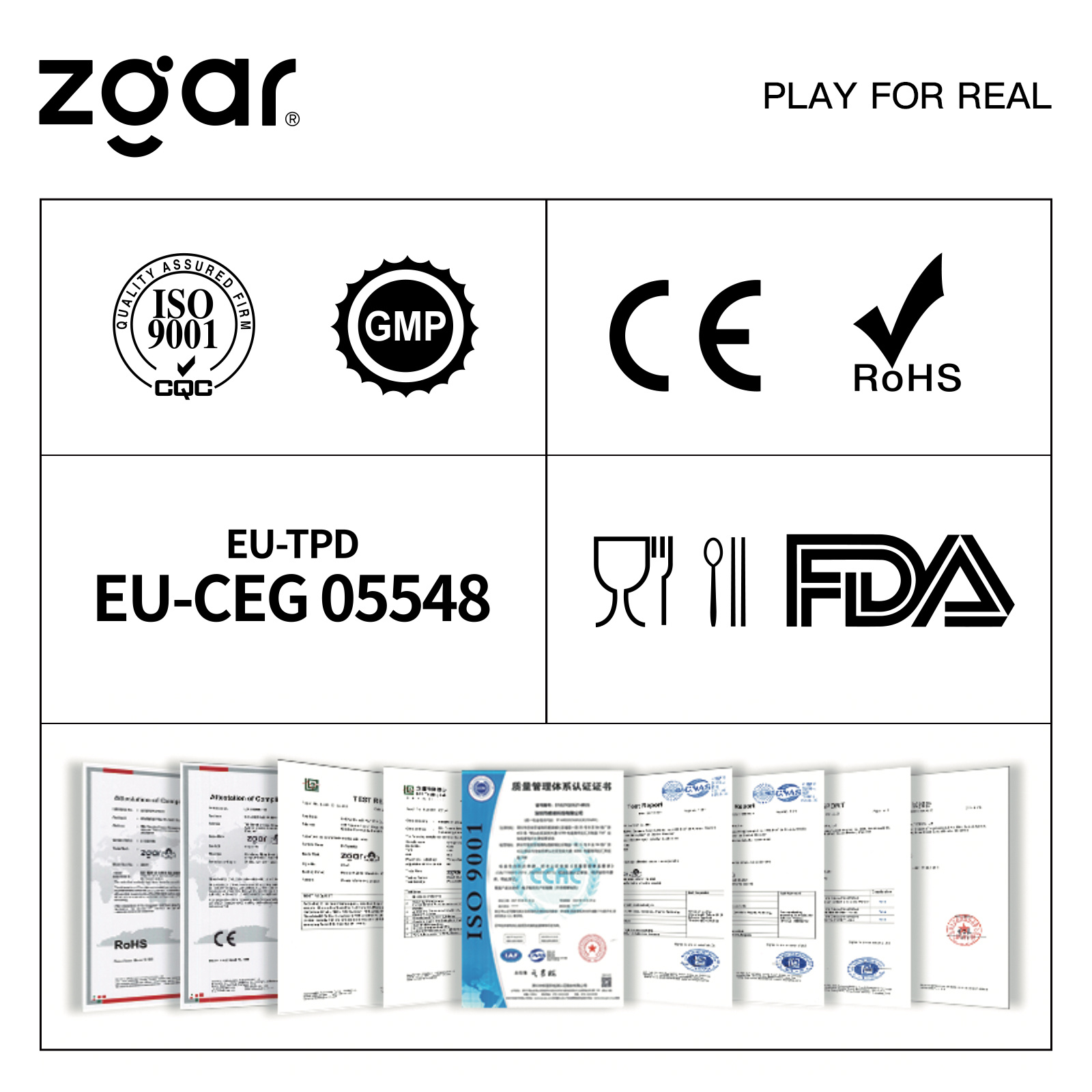The large-scale development of power grids nationwide is considered to be the highest engineering achievement of the 20th century. Despite its success and huge impact, the grid in the United States and other countries is experiencing the dual pressures of growing demand and aging infrastructure. In some countries where the economy is still developing, the existing grid cannot meet the needs of a large population. These pressures have led to new ideas about how to design and operate the grid, and how the grid interacts with end users. The vision of redesigning the grid continues to emerge, but this modernization has been called the “smart gridâ€. In the United States, a national policy to develop smart grids was established in 2007 through public law.
The current grid can be described as a top-down system in which one-way flow of electrical energy is transmitted from a central power plant to a local distribution system and terminal load via a regional transmission system. Market operations centers and transmission and transmission systems take control measures based on limited situational awareness and consumer interaction information to balance supply and demand. Due to the limited level of automation, in most cases, unless the consumer actively submits information, the device cannot detect the service interruption by itself. Behind the future of smart grids, part of the idea is to improve the monitoring technology used to manage the transmission and distribution of electrical energy, but the main idea is to transform the grid infrastructure through the integration of information technology infrastructure with the grid, which will make the power flow The two-way flow of information flows becomes a reality.
One of the driving forces for grid modernization is the desire to significantly increase the use of renewable power generation resources, mainly wind power and photovoltaic power generation. The volatility of these resources is large, and the use of large-scale energy storage to mitigate this volatility has not yet proven to be economically viable. As the use of these volatility energy sources continues to increase, matching instantaneous power generation and demand becomes difficult. Two-way communication between the grid and the consumer, combined with automatic control technology, can quickly adjust the load or power generation resources in the home and building systems, enabling homes and buildings to partner in managing grid reliability and stability. The increased ability to use predictive and transfer loads helps to make better use of grid resources, because smoothing loads means managing power spikes with fewer resources.

Figure 1 Smart grid combines two-way communication infrastructure and local power generation with traditional power distribution systems
The main concept of the interface between smart grid and equipmentIn the context of smart grids, an emerging international consensus is that interactions are most likely to be between energy providers and consumers. These interaction processes are recorded in the form of use cases. The purpose and characteristics of the interface between the energy supplier and the consumer to achieve interaction are also being continuously agreed. These features include integration capabilities that enable easy integration of a wide variety of environments based on facility management standards.
There are already established industries supported by international standards for the automation and control systems of industrial processes and commercial buildings. New industries and emerging standards are emerging in the automation and control systems for residential applications. In these environments, technology, demand, and cost constraints are different. The technologies and standards used in the consumer facility sector (residential, commercial, industrial) are different from the control technologies and standards that support grid operation.
In order for the control and automation systems in the consumer device field to interact with the smart grid system in a collaborative manner, an interface exists between these two domains. Figure 2 illustrates this. This interface must have the following characteristics:
It defines the information that is transmitted over the interface and allows the application to use it flexibly;
It enables the systems on both sides to be upgraded independently;
Its characteristics should be sufficient to meet the needs of complex control systems that may be found on commercial and industrial equipment, and simple to economical for simple systems used by residential consumers;
It should be standardized to make the widespread use of interoperable commercial products a reality.

Figure 2 High-level view of the user interface (blue line) between the grid domain and the user domain
Emerging standards in the United StatesIn the United States, a public/private partnership, the Smart Grid Interoperability Panel (SGIP), has been established to accelerate the development and implementation of interoperable smart grid equipment and systems. Part of SGIP's efforts are aimed at facilitating the development of required standards by working with numerous standards development organizations and identifying important smart grid standards from the SGIP standard catalog. SGIP also supports the development of product testing, certification processes and industry stakeholder education. Some existing standards that have been identified by the Standards List or standards that are being developed under the influence of SGIP are related to the interface between the grid and the consumer. These standards include the OASIS Energy Interoperability Agreement, OpenADR 2.0, IEEE 2030.5 Smart Energy Protocol 2.0 [12] and the Energy Services Provider Interface (ESPI). These criteria are discussed in the next section.
OASIS Energy Interoperability AgreementThe Energy InteroperaTIon (EI) was released in December 2011. A technical committee of the OrganizaTIon for the Advancement of Structured InformaTIon Standards (OASIS) is responsible for maintaining the agreement. EI specifies an information model and message to implement standard communication for demand response events, real-time electricity prices, market participation bids and quotes, loads and power generation forecasts. The standard includes: the scope of the specification document, the architecture, the service description of the Unified Modeling Language (UML) diagram, and the service description in the form of the Extensible Markup Language (XML) architecture (network service message) Must be consistent with this architecture). This specification and architecture is available free of charge from OASIS.
EI serves demand response and other market communications between the grid domain and the consumer domain. The architecture of EI is simple, reducing the service interaction between the two parties. One party may be a device energy management system or device, a demand response provider, a market operator, a distribution system operator, a microgrid, and any other demand response event or participant in an energy market transaction.
The EI standard specifies three profiles, which can be viewed as three basic use cases in the published standard description.
(1) OpenADR - This profile defines the services required for demand response events and price communications. It is based on the functions and lessons learned from the field experience of the OpenADR 1.0 specification;
(2) Price Distribution - This profile defines the minimum set of services required for interaction in a purely price-distributed environment, without requiring energy market transactions and event-based demand response interactions;
(3) TEMIX - This profile defines the services required to implement more common energy market interaction functions that depend on negotiated price-based transactions.
Open automatic demand responseOne of the most pressing and widespread pressures on the grid is the management of short-term peak demand. A variety of demonstration projects have shown that consumer demand response projects that respond to requests from grid service providers to reduce power consumption help reduce peak loads. OpenADR 1.0 was developed to automate DR signals and responses. Automation provides a way to increase the size of DR projects (the number of consumers participating in the response) and to ensure a more reliable and predictable response. The experience gained from the deployment of OpenADR 1.0 facilitated improvements and developed OpenADR 2.0.
OpenADR 2.0 is a communication protocol for DR and price signals and defines a security profile. OpenADR was originally designed to serve the communication of important information related to DR events between the grid domain and the facility domain (Figure 2). The information elements related to power and energy in OpenADR are in compliance with the IEC Common InformaTIon Model (CIM) standard. Currently, IEC PC 118 is considering accepting OpenADR as the IEC standard. OpenADR 2.0 is a subset of OASIS EI 1.0, and in addition to a detailed implementation specification, there are extensions to support retail DR requirements.
OpenADR is an application layer data model with a simple service-oriented architecture/network service protocol that can use any transport mechanism. The test and certification project supports two transport mechanisms: simple RESTful network services and scalable communication and presentation protocol services, including security testing. The OpenADR Consortium is working on other transport binding studies.
The OpenADR Consortium is an industry association that develops detailed OpenADR implementation specifications and supports suites of conformance, testing, and certification. With more than 120 members, the Alliance has certified more than 60 OpenADR 2.0 compliant products. The OpenADR Alliance has developed two protocols that meet the different product and market needs of DR. OpenADR 2.0a is designed for simple DR applications and includes a comprehensive security solution. The OpenADR 2.0b protocol adds content that can support more complex DR clients.
2030.5 Smart Energy Agreement 2.0IEEE 2030.5 Smart Energy Profile 2.0 (SEP 2.0) uses Internet protocols to enable home energy information, control and application management, and communication of electrical facilities to home devices using wired and wireless connectivity. SEP 2.0 was developed in collaboration with the ZigBee Alliance, the HomePlug Alliance, and the Wi-Fi Alliance. SEP 2.0 is designed for implementation in home domain control networks, ranging from meters (or other entities connected to power facilities, such as the Internet) to devices in the home.
SEP 2.0 offers a variety of functions including energy usage information, price, demand response signals and load control signal communication. SEP 2.0 can interact with a variety of devices, including smart meters, thermostats, pool pumps, smart appliances, solar inverters, plug-in electric vehicles, pre-displayed displays, mobile devices, and payment terminals.
SEP 2.0 testing and certification is supported by the SEP 2.0 Interoperability (CSEP). The fundamental mission of CSEP is to help deliver interoperable SEP 2.0 products by defining test standards for SEP 2.0 compliance and certification. In January 2015, CSEP released the first official SEP 2.0 test tool for SEP 2.0 conformance and certification, enabling numerous certification labs to implement a unified certification process for SEP 2.0 products.
To support interoperability and to apply SEP 2.0 extensively, the requirements in the standard do not depend on any particular physical network technology. SEP 2.0 is built on top of the IP stack and other common underlying protocols.
SEP 2.0 is a configuration file designed according to IEC CIM that maps directly where possible, using subsets and extensions where needed. SEP 2.0 uses a RESTful architecture. The standard includes a UML model, a derived architecture (XSD), and a Web Application Description Language (WADL) document. XSD and WADL are normative documents and are publicly available and referenced.
Green buttonThe green button is the name of an industry-led effort that enables power customers to easily and securely obtain energy usage information [17]. This is derived from the fact that when a customer gets data from the web, simply click on the green button on the literal meaning with the mouse. The Green Button Program is based on the Energy Services Provider Interface (ESPI) standard developed by the North American Energy Standards Agency.
The ESPI standard consists of two parts: an XML format for energy usage information and a data exchange protocol. Customers can directly access and download their detailed energy usage, or by using the “Connect My Data†feature, the customer can authorize the power company to obtain relevant data from a third-party service provider selected by the customer.
An industry group called the Green Button Alliance has been established to provide technical support and test and certification for the implementation of the green button. Since March 2015, approximately 60 million US power customers and 2.5 million Canadian customers have obtained their energy usage information through the use of green buttons. This number is still growing rapidly, and other countries are considering adopting this plan.
Facility smart grid information modelThe American Society of Heating, Refrigerating, and Air-Conditioning Engineers (ASHRAE) and the National Electrical Manufacturers Association (NEMA) have jointly developed the facility's smart grid information model standard (Facility Smart). Grid Information Model Standard, FSGIM) [7]. The draft standard defines a public information model that enables household appliances, space air conditioning systems, and home control systems, non-residential buildings, and industrial facilities to manage electrical loads and power generation resources in response to smart grid communications. The features of this information model include:
On-site power management
Demand response
Power storage management
Peak demand management
Forward power usage estimate
Load reduction capability valuation
Terminal load monitoring (auxiliary metering)
Power quality service monitoring
Historical energy consumption data utilization rate
Direct load control
An important concept in the draft standard is “facilityâ€, where “facility†is defined broadly, from an independent family home to a commercial building or a building or industrial or manufacturing facility used as a public facility. By developing a common information model for all of the above types of facilities, power providers can benefit from the same way of interacting with all customers in the same way. This public information model can also benefit consumers because the boundaries between different types of facilities are not always clear. Using a common information model enables products to be easily applied from one type of device to other types of devices at the beginning of design. It also creates an opportunity for manufacturers to design products or software applications that are more than just a device.
The FSGIM is designed to be compatible with OASIS EI, OpenADR 2.0, SEP 2.0 and green buttons. Its role is primarily to provide a standard way of controlling technical standards for different kinds of facilities to increase functionality, which will utilize information exchanged via interfaces, the interfaces here being based on the standards discussed herein. In fact, it adds the required functionality to the customer control system and is part of the customer equipment management and control.
International responseAll of the standards discussed in this article have an international component. OpenADR 2.0 and the green button have been implemented outside the US. The IEC PC 118 Smart Grid User Interface is also considering accepting OASIS EI and OpenADR 2.0 as draft international standards. IEC PC 118 is also considering improving and developing SEP 2.0 as an international standard, but the resolution has not yet been finalized. The ISO TC/205 Building Environment Design is developing FSGIM as an international standard draft.
Figure 3 shows a more nuanced view of the interface concept depicted in Figure 2, taking into account the criteria mentioned in this article. Figure 3 shows that there are common logical concepts in terms of the interface itself, but in the real world, this will eventually be a series of standards to accomplish this role.

Figure 3 Detailed view of the user interface (blue line) between the grid domain and the user domain
To achieve the vision of a smart grid, you need to connect the grid domain to the user domain. This needs to be done in a way that recognizes the significant historical and infrastructure investments that have been made in these two areas. The interface is required because it provides a way to interact with important information between the two domains, but still keeps the technologies and practices involved in each domain independent and does not break the connection. The basic idea is simple, but the current state of industry practice and emerging standards indicates that the end result may be a collection of relevant standards rather than a single standard that suits all situations. The ongoing activities of the IEC and ISO involve a number of companies, industry trade organizations and standards development organizations, which have brought hope to our international consensus, which will bring the necessary stability to the promotion and prosperity of new technologies in the market. Sex.
ZGAR Vape Device 5.0
ZGAR electronic cigarette uses high-tech R&D, food grade disposable pod device and high-quality raw material. All package designs are Original IP. Our designer team is from Hong Kong. We have very high requirements for product quality, flavors taste and packaging design. The E-liquid is imported, materials are food grade, and assembly plant is medical-grade dust-free workshops.
From production to packaging, the whole system of tracking, efficient and orderly process, achieving daily efficient output. We pay attention to the details of each process control. The first class dust-free production workshop has passed the GMP food and drug production standard certification, ensuring quality and safety. We choose the products with a traceability system, which can not only effectively track and trace all kinds of data, but also ensure good product quality.
We offer best price, high quality Vape Device, E-Cigarette Vape Pen, Disposable Device Vape,Vape Pen Atomizer, Electronic cigarette to all over the world.
Much Better Vaping Experience!


ZGAR 5.0 E-Cigarette Vape Pen,ZGAR 5.0 Device Vape,ZGAR Vape Device 5.0 Vape Pen Atomizer,ZGAR Vape Device 5.0 Disposable E-Cigarette OEM vape pen,ZGAR Device 5.0 electronic cigarette
ZGAR INTERNATIONAL(HK)CO., LIMITED , https://www.szvape-pen.com